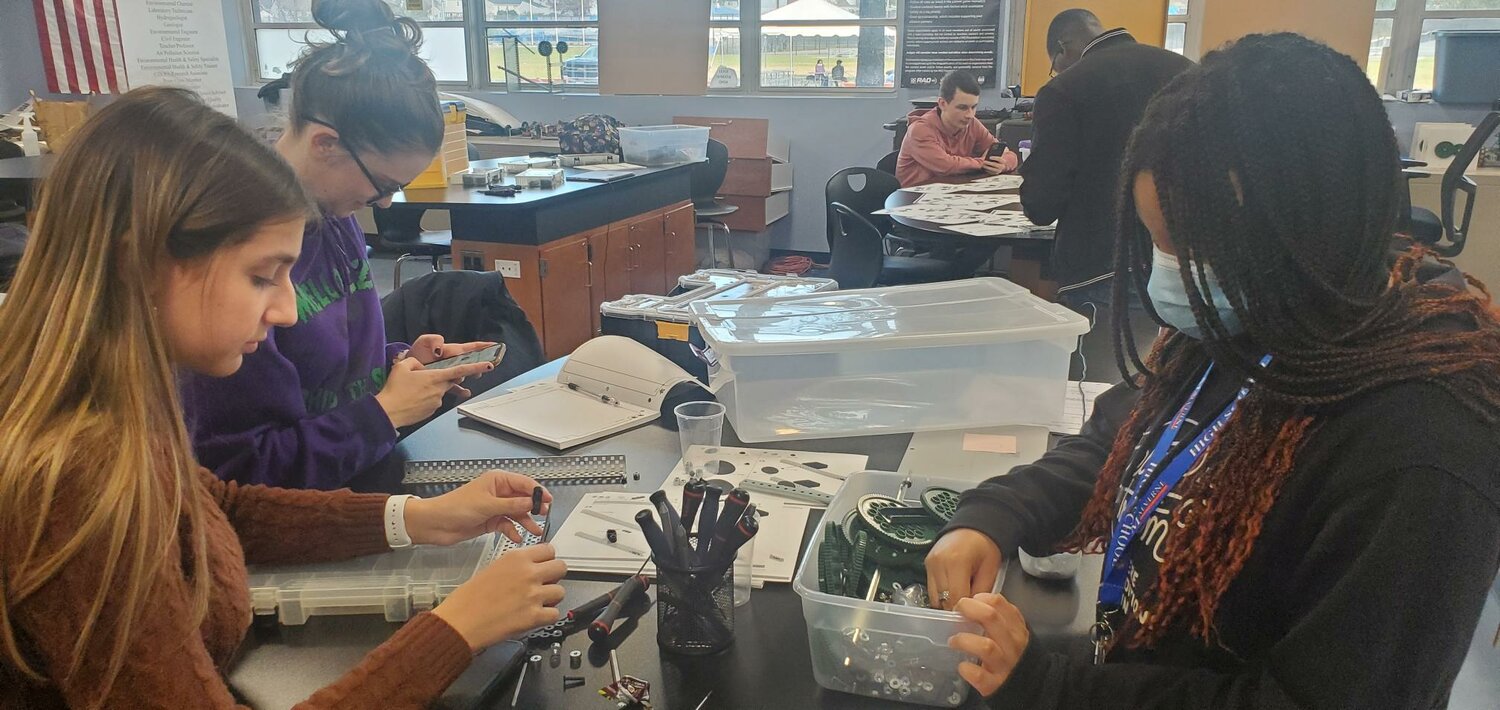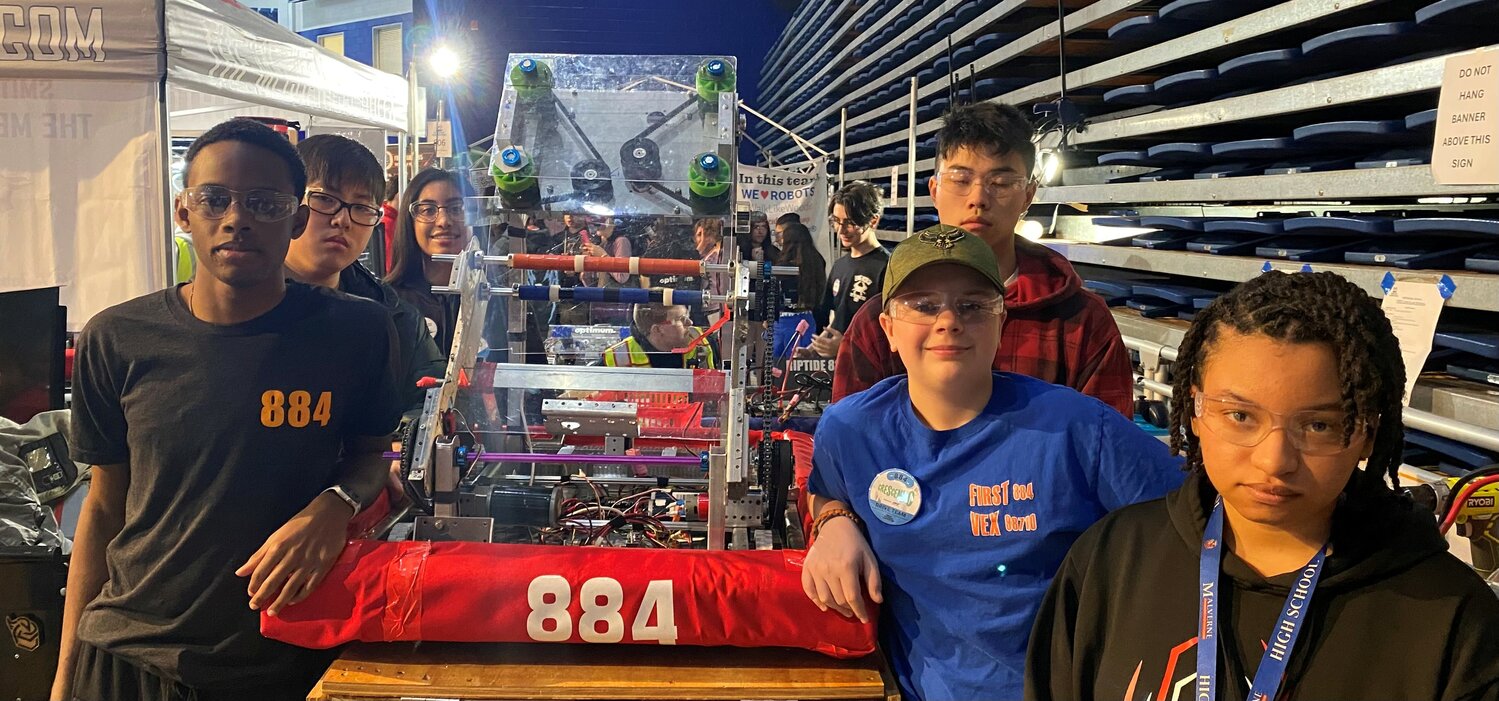Malverne FIRST robotics club is a well-oiled machine
They spend months building and programming a robot from scratch. They put their creation in a closed arena filled with enemy machines. And then it’s a robot fight to the death. No, it’s not the plot of a Michael Bay movie — it’s just another school year for the Malverne Robotics Club.
“Every year I'm impressed by it,” said Bruce Beck, the club advisor. “They're learning and doing stuff in high school that I didn't learn until my first or second year in college for engineering. So I didn't learn this until I was 20, 21. And here they are learning at 15 and 16 years old, and applying all that information.”
The First Robotics Club competed in the 25th annual Long Island Regional First Robotics Competition. They had only three months to design, build and program a robot that had enough precision to launch a foam ring at a target, enough fine motor skills to fit game pieces together, and enough hardiness to not get destroyed by the opposition.
“It’s fun but also stressful,” said sophomore Geoffrey Gross, president of the Robotics club. “Especially when you see parts flying off the robot, or you see a crack in the plexiglass.”
When something like that would happen — the robot loses an arm, or its protective shield cracks — the team has mere minutes to build it back better.
“You have to fix and edit your robot while you’re there,” Gross said. “So we were making changes and building the robot at (the competition), to improve the robot so that we could do better as we went.”
“Our team is constantly making renovations to the robot itself,” Beck said. “Fixing things, changing things, changing the programming, making this faster, making this slower.”
“It’s a nonstop process all day long,” he added.
That’s exactly the kind of on-the-fly problem solving that the Robotics Club hones both in and outside of competitions, said Florence Balay, the Malverne district supervisor of STEM. As a teacher, watching these students take the robotics theory they’ve been learning in the classroom and apply it on the spot in a high-stress environment — and do it well — is very rewarding, she said.
“It challenges students to think analytically, to solve problems, to enhance critical thinking,” Balay said. “And teamwork. (Robotics) promotes communication, and skills that students need to work together. They’re building and programming the robot — so they have to work collaboratively.”
The club is designed to further students’ passion for STEM, but also to equip them with skills they may not already have yet. Alesia Canales, a sophomore, had loved coding and technology for years — but this club brought her expertise to a whole new level.
“I did a lot of building, and I did a lot of learning,” she added. “Because I didn’t know a lot of this stuff before, but you can go on a learning experience. You get to learn how to build the robot, what goes into the process of creating one. It’s really cool.”
Malverne High School has not one, but two robotics clubs — one that competes in the First robotics competition, and another, Vex, which builds robots from kits.
The robotics program is growing bigger and bigger every year, Beck said, with a diminishing gender gap. The skills go beyond robotics, said both the students and faculty. These are skills for life. When Balay recently had an issue with her patio, she went out and did the welding and soldering herself. Those skills all come from her background in robotics, she said.
“Robotics is a very interesting, amazing experience for anyone,” Canales said. “It just teaches you about life in general, the process of solving problems and fixing things, even on the fly, even on the spot. Because life is unexpected. Life is like robotics — when we have problems in the competition, you have to solve them immediately.
“It helps me in my own life personally, solving things as they came up instead of kind of ignoring them and hoping they go away. I think that’s valuable for anyone.”











